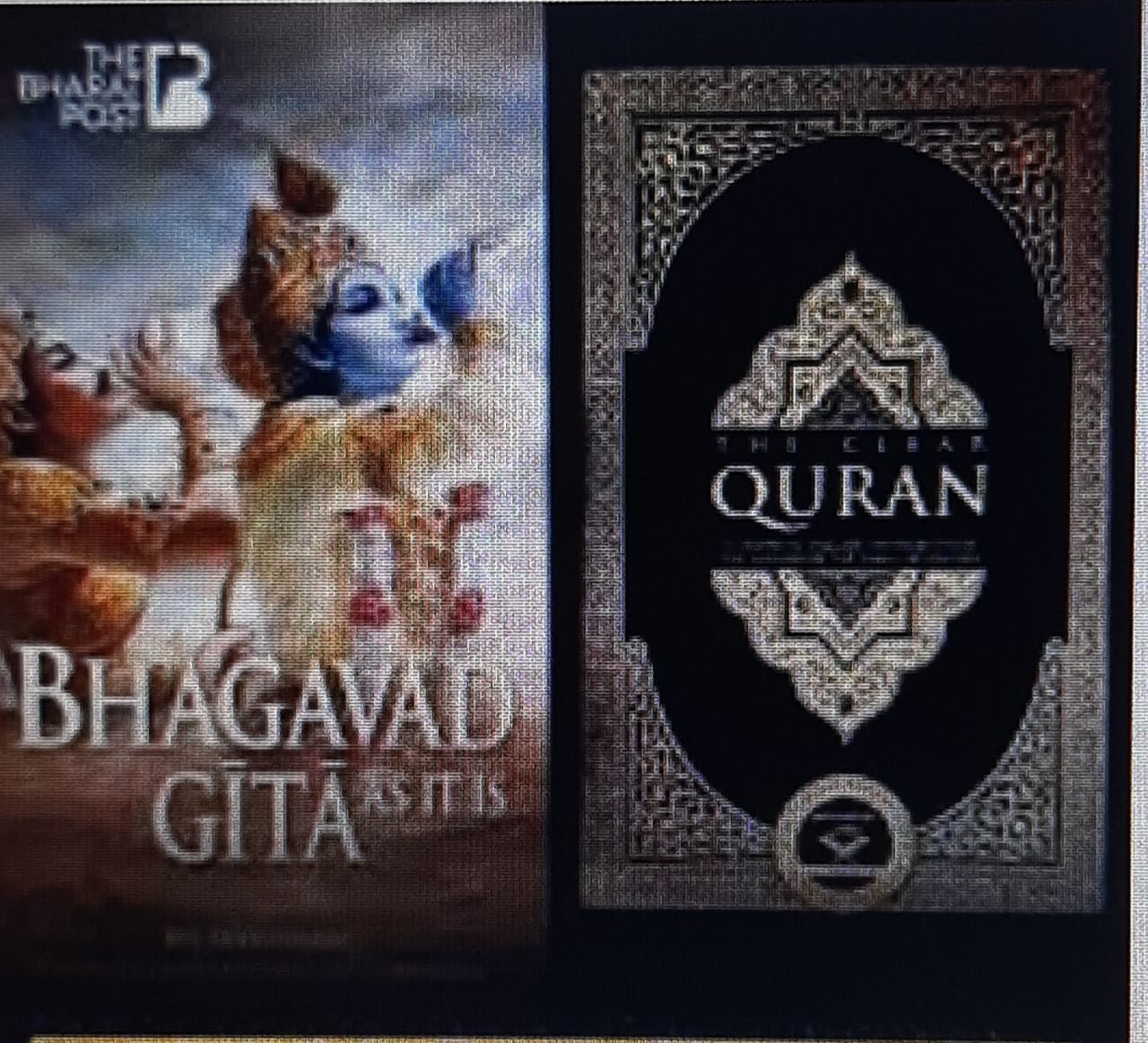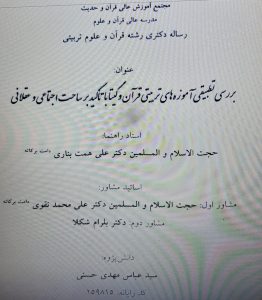
At a time when the two communities are at loggerheads, through this comparative study effort has been made to effectively highlight similarities in the two holy scriptures and bring both communities together for peaceful co-existence in India and elsewhere. There are lots of similarities in the two texts, which need to be properly taught to the people, writes M Hasan
Lucknow, March 30: A comparative study of the holy books Qoran and Bhagavad Gita by Qom-based prominent Shia scholar Dr Syed Abbas Mehdi Hasani, who belongs to east UP district Ambedkar Nagar (Akbarpur), has laid considerable stress on similarities and differences between the two texts. Dr Mehdi has done his doctoral thesis on the issue with the title: Evolution of the nurturing teaching of the Qoran and the Gita with emphasis on the social and rational aspects”.
While considering the unique interpretations and perspectives prevalent within the Shi’a Islamic scholarship of Qom, Dr Mehdi has discussed themes like monotheism, ethical conduct, the concept of God, the role of action, and the nature of the soul, highlighting both similarities and differences between the two texts. The doctoral research from Al-Mustafa International University has been completed under the guidance of Dr Himmat Banari with Aligarh-based Dr Ali Mohammad Naqvi and Delhi University’s Dr Balram Shukla as advisors. Dr Mehdi said that at a time when the two communities are at loggerheads through this comparative study effort has been made to effectively highlight similarities in the two holy scriptures and bring both communities together for peaceful co-existence in India and elsewhere. He said there were lots of similarities in the two texts, which need to be properly taught to the people.
A comparative study of the Quran and the Bhagavad Gita reveals significant similarities in promoting ethical principles like non-violence, compassion, and devotion to a single God, while also highlighting key differences in their perspectives on the nature of God, the role of prophets, and the concept of reincarnation, with the Qoran emphasizing strict monotheism and the Gita allowing for a more multifaceted understanding of the divine within the Hindu framework.
In the abstract of his Ph.D. thesis Dr Mehdi says “the question of the educational teachings of the Holy Qoran and the Gita in social and intellectual dimension using the guidelines of the verses in Qoran and points in the Gita and the comparison between the two is a subject that has not been studied so far”. Dr Mehdi further writes “this study after expressing the educational teachings of holy Qoran and Gita in the social and intellectual dimensions with a descriptive-analytical and comparative method has compared the teachings of these two books and then it describes their similar and different points.”

The scholar has picked up a stanza of the Gita in Sanskrit and after explaining it in Persian language has compared it with the available verses of the Qoran. Dr Mehdi writes “ the similarities and the differences at natural because many of Gita’s teachings are like heavenly scriptures. Many Hindu scholars claim that Gita is a Devine revelation. In the social dimensions, politeness about relatives such as respectful treatment and in relation to the teacher and the mentor politeness and humility and in relations to the rulers-justice and relation to the general public respect for equality and non-violence etc. In the intellectual dimension the factors of rational education such as the doctrine of thought and doctrine of insight. He says many of these contents have quantitative and qualitative advantages, which have been pointed out in this discussion. He says choosing and practicing these education practices can lead to growth of social and intellectual dimensions of individuals. “Therefore in the light of these teaching they can live a peaceful life”, Dr Mehdi concludes.
This is first of its kind of study in Persian language. There is no doubt that on Monotheism both texts fundamentally uphold the belief in one supreme God, although interpreted differently in each tradition. Similarly in ethical teachings both promote ethical values like honesty, justice, charity, and self-control. On importance of Karma both texts acknowledge the concept of karma, where actions have consequences in this life and beyond. Similarly both lay stress on the concept of following one’s duty or “dharma” in society and both encourage practices like meditation, prayer, and self-reflection to achieve spiritual liberation.
It may be mentioned that Pramit Goel of Hill Spring International School, Mumbai in his paper wrote: “The Bhagawad Gita and Qoran: two sides of the same coin” has written “ the two scriptures evidently share several similarities in terms of their teachings however unfortunately, have been at times manipulated and weaponized by individuals and groups to serve their vested interests. Such manipulations deviate from the true essence of the sacred texts and undermine their genuine message of peace, harmony, and compassion. The two scriptures offer valuable insights, most of which are relevant even today to society. However, some parts may seem dated, and it is imperative for us to adapt these aspects to the modern world while preserving the wisdom they contain. In a world where rigid cultural viewpoints divide us, it is imperative to view other religious texts in an inclusive and open-minded manner, rather than blindly disregarding them. Embracing the best teachings from the Gita and Qoran such as empathy, love and moral responsibility can lead individuals towards a happier life and contribute to a more inclusive and harmonious society”. The paper was published in May-June 2024 edition of International Journal of Multidisciplinary Research.
(M Hasan is former Chief of Bureau Hindustan Times, Lucknow)









